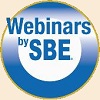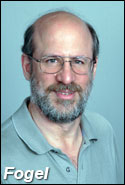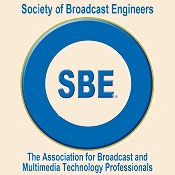Wednesday, October 12th War Stories by Jeff Welton, Nautel Madison Marriot West 1313 John Q Hammons Drive Middleton, WI (Map) Meeting will be in the Conference Center Our Chapter 14 Years Ago2022 Broadcasters Clinic Agenda ReleasedChapter 24 Needs Your HelpMaintaining the Chapter 24 web site eNews letter editor and distribution Nominations Committee Chair including Electronic Elections If you are interested in taking over any of these tasks please contact Chapter Chair Matt Mommaerts (mmommaerts@sbgtv.com). Last Meeting Minutes
|
| Woodward Radio Group CE |
| WMTV TV, Broadcast Engineer |
| WKOW PT MC Operator |
Program Ideas Appreciated
Amateur Radio News
Compiled by Tom Weeden, WJ9H
As Hurricane Ian made its way across Florida and South Carolina, amateur radio operators have continued to provide communications support for weather updates and requests for assistance. The hurricane made landfall at 3:00 PM Eastern Time on Wednesday, September 28, 2022, just south of Tampa, Florida, as a Category 4 hurricane with winds of 150 miles per hour. Millions of residents were without power, and damage was reported as extensive along the storm's initial path.
Director of Emergency Management for the American Radio Relay League (ARRL), Josh Johnston, KE5MHV, said many ARRL Amateur Radio Emergency Service® (ARES®) volunteers and their groups are involved across Florida, Georgia, and South Carolina. "These amateur radio volunteers are well-connected with their state and local emergency management partners in government and non-government organizations," according to Johnston, who also said that there were ARES members, at the request of the Florida Division of Emergency Management, serving in the state Emergency Operations Center. Many ARES® groups were also operating in several shelter locations.
The amateur radio Hurricane Watch Net has several links for hurricane information and amateur radio resources here.
FCC Grants an ARRL Emergency Request to Permit Higher Data Rate Transmissions for Hurricane Relief Communications
The Federal Communications Commission has granted an ARRL emergency request for a 60-day temporary waiver intended to facilitate amateur radio emergency communications for hurricane relief. The waiver was adopted on September 27th, and immediately permitted amateur radio operators supporting amateur data transmission for Hurricane Ian traffic to employ a higher symbol rate for data transmissions than the current limit of 300 baud. (waiver).
Wisconsin Ham Helps Another Wisconsin Ham in Distress
Scott Strecker, KG9IV, of Chippewa Falls, was working from home on September 2nd and monitoring a Wisconsin linked repeater system, when a ham in Brown Deer came on the air asking for assistance in getting an ambulance. He had slipped on his bathroom floor and couldn't get up. While he couldn't get to the phone, he did have his handheld radio with him. Strecker, on the other side of the state, called the Brown Deer police call center and relayed the Brown Deer ham's information to get an ambulance dispatched to him. Strecker said, "It felt good to help out. I also realized it was due to my monitoring that I was able to hear his call. If you are not participating in the weekly local ARES net, I would encourage you to do so when you can."
Ennes 2022 Scholarships
The Harold E. Ennes Scholarship recipient is Michael Cassara, a junior at the University of Pittsburgh pursuing a degree in computer engineering.
Receiving the Robert D. Greenberg Scholarship is Meredith Frank, a sophomore TV production & studies major at Hofstra University.
The John H. Battison SBE Founder's Scholarship has been awarded to Jade He, a member of SBE New York Chapter 15, and a student at Hofstra University where she is a leader and manager for two student-run media organizations.
The Gino Ricciardelli Scholarship has been awarded to Drew Hurst who is in his second year at Ball State University where he majors in media with a concentration in digital sports production.
Matthew Kucharczyk received the Youth Scholarship and is currently studying mass media with an emphasis on film and video at Washburn University.
EAS Rules Clarity Update
To increase the use of CAP-formatted alerts, EAS Participants are required to check for CAP-formatted messages when they receive messages in legacy format, and if the same alert is available in CAP format, to relay the CAP version instead. To allow sufficient time for a CAP version to appear without unduly delaying transmission of the alert, EAS Participants are required not to transmit an alert in legacy format until at least 10 seconds after receiving its header codes unless they confirm by polling the IPAWS feed that no matching CAP version of the message is available. This applies to all EAS alert categories except for alerts with the EAN, NPT, or Required Weekly Test (RWT) event codes. It is hoped this change will result in a more detailed and a higher quality voice message as provided by CAP.
The text for the EAN event code is changed from "Emergency Action Notification" to "National Emergency Message", for the NPT event code is changed from "National Periodic Test" to "Nationwide Test of the Emergency Alert System" and for the PEP originator code from "Primary Entry Code System" to "United States Government" These changes are hoped to make visual EAS messaging less confusing and thus more accessible to people who are deaf or hard of hearing.
The text display used in the visual crawl for EAS-based nationwide test alerts transmitted only in legacy format is changed. Specifically, when a legacy nationwide test alert is generated from the PEP and NPT header codes and uses the "All U.S." geographic location code, video service EAS Participants are required to display the following scripted text: "This is a nationwide test of the Emergency Alert System, issued by the Federal Emergency Management Agency, covering the United States from [time] until [time]. This is only a test. No action is required by the public." Because this change is for the benefit of the visual display, Radio participants are exempt from this change.
The National Information Center (NIC) event code is deleted because the federal National Information Center no longer exists, and there is thus no reason to maintain this event code in the rules.
To avoid potential confusion stemming from our associating the PEP originator code with the term "United States Government," we are replacing the term "Primary Entry Point System" in our Part 11 rules with the term "National Public Warning System." This change aligns the EAS rules with FEMA's use of the term "National Public Warning System" (NPWS) having ceased using "Primary Entry Point System".
All EAS Participants are to comply with the rules adopted in this order no later than one year from the effective date of the order. Cable systems however will have 15 months to comply with the EAN text change where only a software update is needed, and up to six years to comply with that EAN text change in systems where that text is hard coded into the decoder boxes located on customer premises which will require the boxes be replaced.
Comments on FCC Docket No. 16-142: Authorizing Permissive
Use of the "Next Generation" Broadcast Television Standard
by Vicki W. Kipp
The FCC asked three questions.
Should the requirement for substantially similar programming content on ATSC 3.0 and 1.0 be allowed to expire in July 2023?
No 5 (pay-TV companies),
NA 15
Should FCC control patents for NextGen technology?
No 15 (equipment manufacturers)
NA 22
Should the FCC drop the requirement for NextGen receivers to comply with the A/322 standard?
No 11 (may delay NextGen Rx production)
NA 25
To me, Pearl TV's comment was among the most realistic and relevant submissions. Pearl TV opens with, "the market-driven and broadcaster-led transition to ATSC 3.0 is off to a great start, but the Commission needs to do more to help the industry meet the challenges ahead." They go on to say, "the time is ripe for the Commission to begin considering how and when the television broadcast industry will fully convert to ATSC 3.0, an essential regulatory step particularly for spectrum constrained markets where limited options for simulcast hosting arrangements will hinder the full deployment of ATSC 3.0."
Pearl TV identifies the known ATSC 3.0 host station limitations, saying, "In the medium and long term, moving the transition forward on a voluntary, market-driven basis will become more difficult in the absence of some form of regulatory relief as limited spectrum and infrastructure constrain the pool of viable simulcast hosts."
Pearl TV further explains how even if broadcasters can get carriage on an ATSC 3.0 lighthouse, the lighthouse has very few options for which stations can simulcast their 1.0 station who will meet the stringent requirement for a 95% population coverage match. In my opinion, this requirement makes it hard for stations who have the largest coverage patterns in a market to qualify with the FCC to be an ATSC 3.0 lighthouse.
Pearl TV explains, "Due to the requirement that broadcasters simulcast their 1.0 and 3.0 streams and that 1.0 simulcasts cover at least 95% of the existing viewer base, there are only so many facilities that can conceivably serve as host stations. And each time broadcasters launch 3.0 service in a new market, the list of viable host facilities shrinks correspondingly."
NAB submitted a comment that could make it easier to create acceptable ATSC 1.0 channel sharing agreements. NAB proposed that the "FCC should allow ATSC 1.0 lateral hosting." If lateral hosting were allowed, ATSC 1.0 stations who are hosting an ATSC 3.0 simulcast would have the ability to offload some of their own ATSC 1.0 streams to other ATSC 1.0 stations in the same market to ease bandwidth constraints. Some stations are more accepting of high bitrate compression than others and more flexible with their bandwidth than others.
America's Public Television Stations (APTS) commented on their difficulties meeting the 95% population coverage match requirement for partnerships that focus on a DMA's population centers. APTS commented that "PTV stations serving rural areas and statewide networks of PTV stations (sited to provide service based on state lines rather than DMA boundaries) cannot readily meet the FCC's simulcast requirements..."
In my opinion, the end of the FCC's substantially similar requirement will have limited impact on broadcasters. It would merely allow for different content on ATSC 1.0 and ATSC 3.0 after July 2023. The FCC still requires broadcasters to simulcast ATSC 3.0 on ATSC 1.0, even if the content differs.
Most broadcasters commented that even if the substantially similar requirement sunsets in July 2023, they will still air the same content on ATSC 1.0 and ATSC 3. They don't want to lose their ATSC 1.0 audience.
Several broadcasters requested an end date for the ATSC 1.0 simulcast requirement. However, the FCC has not given an end date for ATSC 1. To me, the more impactful question is when will the FCC requirement for ATSC 1.0 simulcast go away? When can ATSC 1.0 transmitters choose to shut down?
Currently, the FCC is missing one commissioner. The FCC is currently evenly split with two Democrats and two Republicans. The tiebreaker commissioner has not been approved by Congress. I don't expect big changes from the FCC until they once again have five commissioners.
Acknowledgements: My thanks to Tom Smith for showing me how to access the incoming comments.
NAD Confusion
From BDR Net
Certification and Education
compiled by Jim Hermanson
Each year, account balance permitting, Chapter 24 will reimburse half the application fee to any member of Chapter 24 in good standing who successfully obtains any SBE certification level not previously held by that member. Contact the SBE Chapter 24 chairperson or certification chairperson for more information.
When you are ready to take an SBE exam, note the open exam schedule, complete the appropriate application (found here... http://www.sbe.org/applications) and send it directly to the SBE National office (see address below) with the respective fee. You will be notified once your application is approved. Approximately 3 weeks before the exam time, your local certification chairman will receive a list of applicants and exams in his/her area and arrange for a proctor. He/she will then contact applicants to schedule a mutually agreeable date, time, and place for the exam(s) within the respective exam date window. This must be coordinated before the exam will be sent by SBE National. Completed exam(s) will be mailed back to SBE National for grading. Pass/fail results will be mailed directly to the applicants.
The majority of SBE certifications are open book and access to the Internet is allowed to give a more "real world" situation.
You may mail, email, or fax your applications to:
|
Megan E. Clappe Certification Director 9102 N. Meridian St. Suite 150 Indianapolis, IN 46260 317-846-9120 Fax mclappe@sbe.org |
To apply for a specialist certification, an individual must currently hold certification on the Broadcast Engineer, Senior Broadcast Engineer, Professional Broadcast Engineer or Broadcast Networking Engineer Certification level. Exams must be completed within three hours and consist of 50 multiple-choice questions (two points each) and one essay question (20 points maximum). Examinees are provided one essay question to answer. Exams are pass/fail, and a score of 84 is a passing grade.
| Exam Dates | Location | Application Deadline (to SBE National Office) |
February 3-13, 2023 |
Local Chapters (Madison Area) |
January 6, 2023 |
June 1-12, 2023 |
Local Chapters (Madison Area) |
April 21, 2023 |
August 4-14, 2023 |
Local Chapters (Madison Area) |
June 16, 2023 |
November 3-13, 2023 |
Local Chapters (Madison Area) |
September 8, 2023 |
October Webinars

Introduction to Successful Troubleshooting
Taking the Next Step
Module 2
Thursday, October 20, 2022 | 1 p.m. CT
The webinar will be a continuation of Module 1 with different troubleshooting scenarios. Each scenario demonstrates use of the troubleshooting process and will continue to utilize soft skills and techniques to take the next step and solve real-world problems encountered on the job. Participate in solving the presented problem scenarios by choosing the next troubleshooting step to take to fix the problem.
Your Instructor

Dan Fogel, Founder and Former CEO of DNF Controls
DNF Controls (www.dnfcontrols.com) has provided products and systems to the television broadcast and production industries for the past 30+ years. Dan's background also includes work with live concerts, music recording, audio post-production, and commercial 2-way radio systems.
SBE Recertification Credit
The completion of a webinar from Webinars by SBE qualifies for 1 credit, identified under Category I of the Recertification Schedule for SBE Certifications.
Registration and Pricing
This webinar will be approximately 90 minutes long.
SBE Members: $62
MemberPlus Members FREE
Non-Members: $92
Registration Link
Questions?
If you have questions regarding this course, contact Cathy Orosz via email or by phone at 317-846-9000.
More information about registering using the SBE MemberPlus benefit
All SBE webinars are included at no additional cost for members who renew or join using the $175 SBE MemberPlus membership option. You get all the live and archived Webinars by SBE in the SBE catalog plus any new webinars the SBE adds during the membership year, all for no extra cost. Members can renew and newcomers may join online at the SBE website using the SBE MemberPlus option.
Access to the SBE webinars through the SBE MemberPlus program is limited to the MemberPlus-purchaser only. You are not permitted to distribute, sell, copy, share, project or otherwise make the webinars available to any other individual or group without express written permission by the SBE.
Several state-of-the-art radio, TV, multimedia, and IT engineering training is available through this page...
http://sbe.org/education/webinars-by-sbe/on-demand-webinars/
More information on SBE Education Programs is available here...
http://www.sbe.org/education/
Views expressed herein do not necessarily reflect the official position of the Society of Broadcast Engineers (SBE), its officers, or its members. SBE Chapter 24, Inc. regrets, but is not liable for, any omissions or errors. Articles of interest to Chapter 24 members are accepted up to the close of business the 1st day of each month. Send your article to lcharles@sbe.org.

